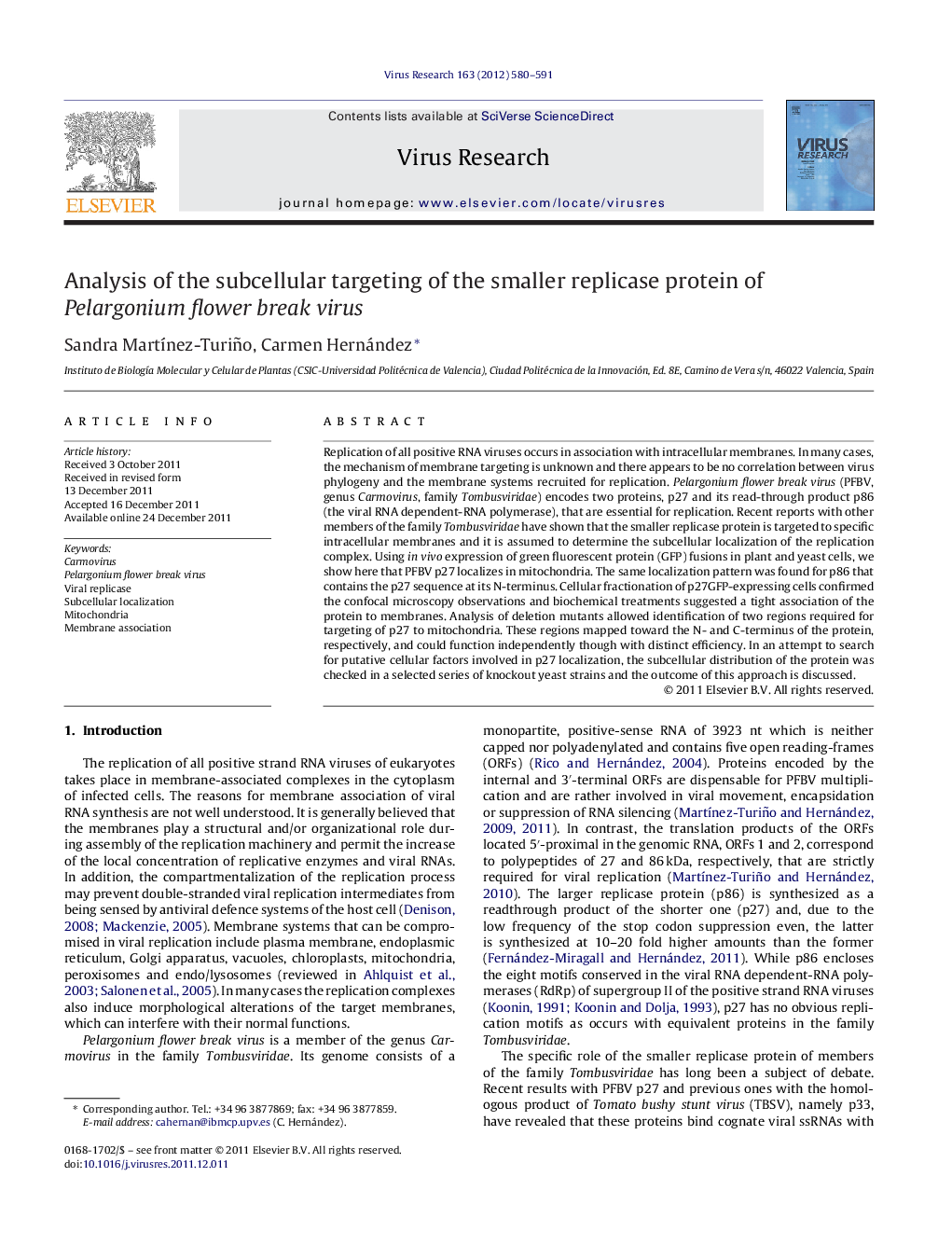| Article ID | Journal | Published Year | Pages | File Type |
|---|---|---|---|---|
| 3428905 | Virus Research | 2012 | 12 Pages |
Replication of all positive RNA viruses occurs in association with intracellular membranes. In many cases, the mechanism of membrane targeting is unknown and there appears to be no correlation between virus phylogeny and the membrane systems recruited for replication. Pelargonium flower break virus (PFBV, genus Carmovirus, family Tombusviridae) encodes two proteins, p27 and its read-through product p86 (the viral RNA dependent-RNA polymerase), that are essential for replication. Recent reports with other members of the family Tombusviridae have shown that the smaller replicase protein is targeted to specific intracellular membranes and it is assumed to determine the subcellular localization of the replication complex. Using in vivo expression of green fluorescent protein (GFP) fusions in plant and yeast cells, we show here that PFBV p27 localizes in mitochondria. The same localization pattern was found for p86 that contains the p27 sequence at its N-terminus. Cellular fractionation of p27GFP-expressing cells confirmed the confocal microscopy observations and biochemical treatments suggested a tight association of the protein to membranes. Analysis of deletion mutants allowed identification of two regions required for targeting of p27 to mitochondria. These regions mapped toward the N- and C-terminus of the protein, respectively, and could function independently though with distinct efficiency. In an attempt to search for putative cellular factors involved in p27 localization, the subcellular distribution of the protein was checked in a selected series of knockout yeast strains and the outcome of this approach is discussed.
► The p27 replicase of PFBV shows mitochondrial localization in yeast and plant cells. ► Identification of regions responsible for mitochondrial targeting of p27. ► Insights into the type of association of p27 to membranes. ► Expression of p27GFP in yeast knockout mutants to explore potential mislocalization.
